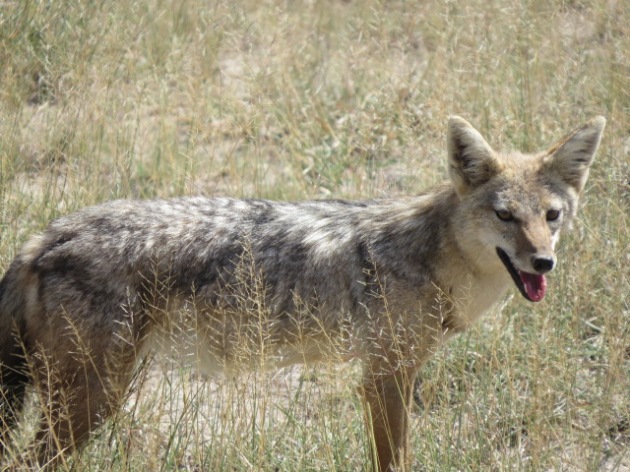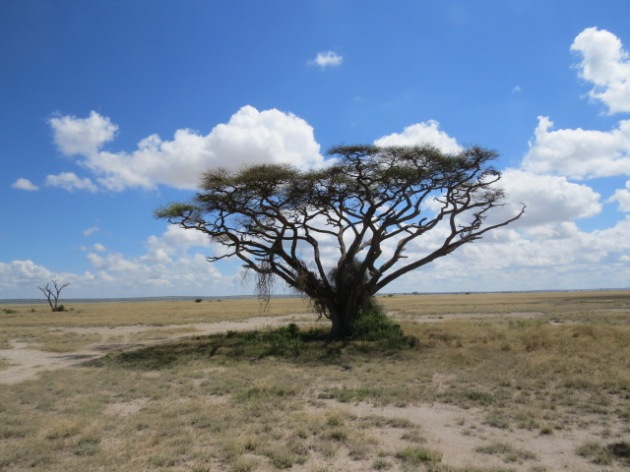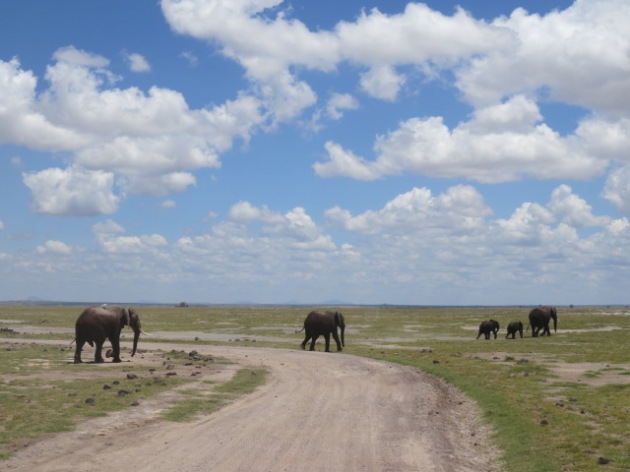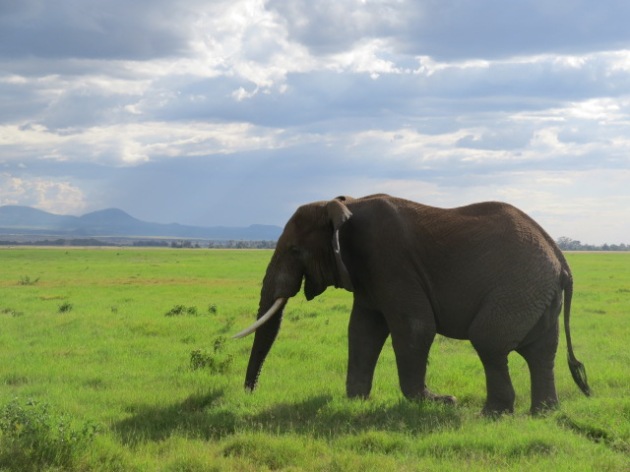We’ve had the opportunity to participate in two field exercises for our environmental policy class in which we went out into the local community and asked questions about specific topics. The first exercise we did was a transect walk perpendicular to the main road. We were separated into groups of three students and each group had a guide who helped to translate the questions and responses. We took note of the types of soil, land use, geographical features and overall socioeconomic appearance of the area we walked through. We also had the opportunity to stop and interview any people we came across during the 4 km walk. It was the firs time we were able to talk with the locals without them expecting us to purchase something which was a definite relief. One of the questions we were supposed to ask was what resources were difficult to obtain. One of the most common responses was the lack of water, especially in the dry season. Most of the Maasai people in the local community practice pastoralism but as a result of modernization and the growing need for cash; many people have started to integrate agriculture into their livelihoods. There have also been a lot of immigrants from other parts of Kenya and East Africa who have started farming on Maasai land. This increase in people and change of land use has put a definite strain on the resources of an already arid environment. Another answer to the resource question, which I found most interesting, was when one man said that there was a lack of maternal care and vehicles to send women in labor to the hospital. The transect that I walked had a hospital not too far from the bomas but definitely not walking distance for an emergency like childbirth. He also mentioned the general lack of medicine and staff at the hospitals making it difficult to get what was needed. Traditionally illnesses and health problems would first be treated with home remedies and the hospitals or modern healthcare would be the last resort but with increased education and increased apparent availability of these resources, many locals are seeing their benefit.
The second exercise we did was on March 6th and for this exercise we again walked perpendicular to the main road, into the bush, but the focus this time was on human wildlife conflict. We had the same small groups and guides and were provided with a list of 21 questions (no pun intended) to ask any residents we came across. We ended up interviewing 6 different people, 2 men and 4 women, and received generally the same type of answers. Every person we crossed either owned or rented the land they were cultivating and only one of them was a native Maasai; the rest were either Kukuyu, a different Kenyan tribe or from Tanzania. When we asked if they have had any conflict with wildlife, it was unanimous, all of them had crops destroyed by wildlife and majority blamed the elephants. People estimated that anywhere from 50 to 100% of their crop yield would be destroyed by a single invasion of elephants. Kimana, the town I am living in, is within 20 km of Amboseli National Park, which is notorious, worldwide for their elephant populations. The Kenyan Wildlife Service (KWS) runs the park, but all of the community members we interviewed said they do nothing to help the farmers in the region. There are generally wet and dry season here in Southern Kenya where during the dry season the large herbivores remain in the park since it offers a permanent water supply. The issue comes during the wet season when the animals leave the park in search of better food sources. The last question we asked was if the residents thought there would be a potential resolution to this issue in the future. All of the people we interviewed said that if the government or KWS paid for school fees in return for crop damage than that would be enough. The logic of most people was that if their children could go to school and get a job than the wildlife conflict would not have such a negative effect on the family. Most people rely solely on their crops as an income making wildlife damage extremely detrimental. A huge percentage of Kenya’s income is due to tourism, from millions of people coming to view these incredible animals, especially elephants and lions, which are often the biggest culprits of human wildlife conflict. The government pours billions of shillings a year into conservation and tourism but yet there is no waste control, there is a lack of water sanitation, extreme poverty and expensive secondary education. Much of the community feels that they receive the burden of the animals but never receive the benefit that the government collects from tourism. It’s a complicated and multi-layered issue with no quick solution, but it was fascinating to learn what the local people felt about the wildlife. The last woman we interviewed had all the same sort of answers I discussed above but as we were wrapping up the interview her and our guide had an abnormally long conversation in Swahili in which our guide didn’t break to translate to us as he normally would. He finally turned to us and said the woman had asked if we would like to buy any of her beads. We hadn’t brought any money since this was a field exercise, not a time when we would be purchasing items. We apologized, said our goodbyes and started to walk back to the road. Just when we got out of earshot from the boma, our guide came up to me and said that the woman asked what she receives in return for giving us her time to answer our questions. I was really taken aback. The interviews took about 15 to 20 minutes of the resident’s day, which is a substantial amount of time when there’s water to be collected and livestock to be managed. She obviously had a point and I had no immediate answer. SFS donates money to nearby schools and we also have community service days, but again, the people fail to see the direct impact on them. I initially thought about maybe giving a bar of soap or something to the people who give us their time but there are flaws in that type of service as well. It’s unsustainable in the long run to give objects of monetary value to people who offer their time. It seems that the work SFS does here is unquantifiable, there is no fiscal value you can place on it. Humans will be humans and we, as a race will never be satisfied. In the end you give what you can and hope you can make a positive impact.
We are going on expedition to Nakuru National Park for the next 5 days so I won’t have internet access but I will definitely give an update when I get back. And of course, pictures!
Here are some pictures from our last non- program day! We went to Amboseli in the morning and had a few close encounters with elephants and then relaxed at a lodge in the afternoon!





